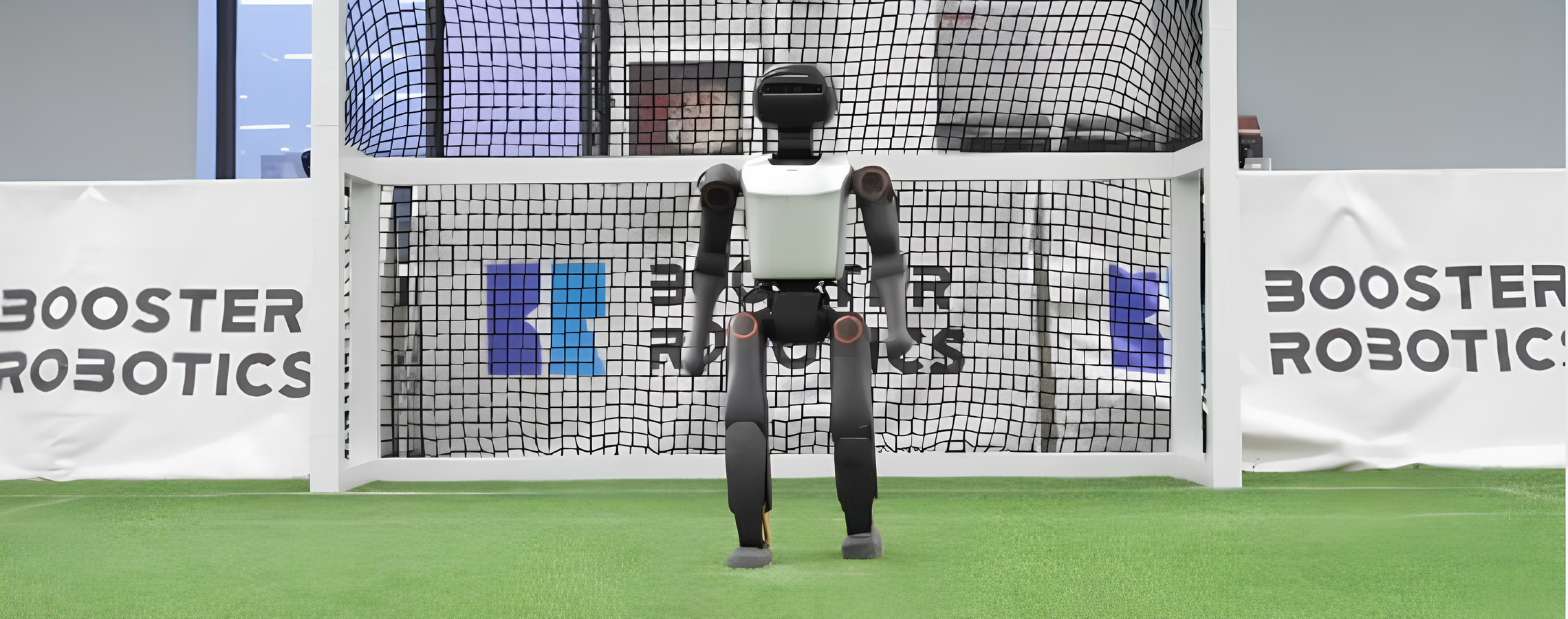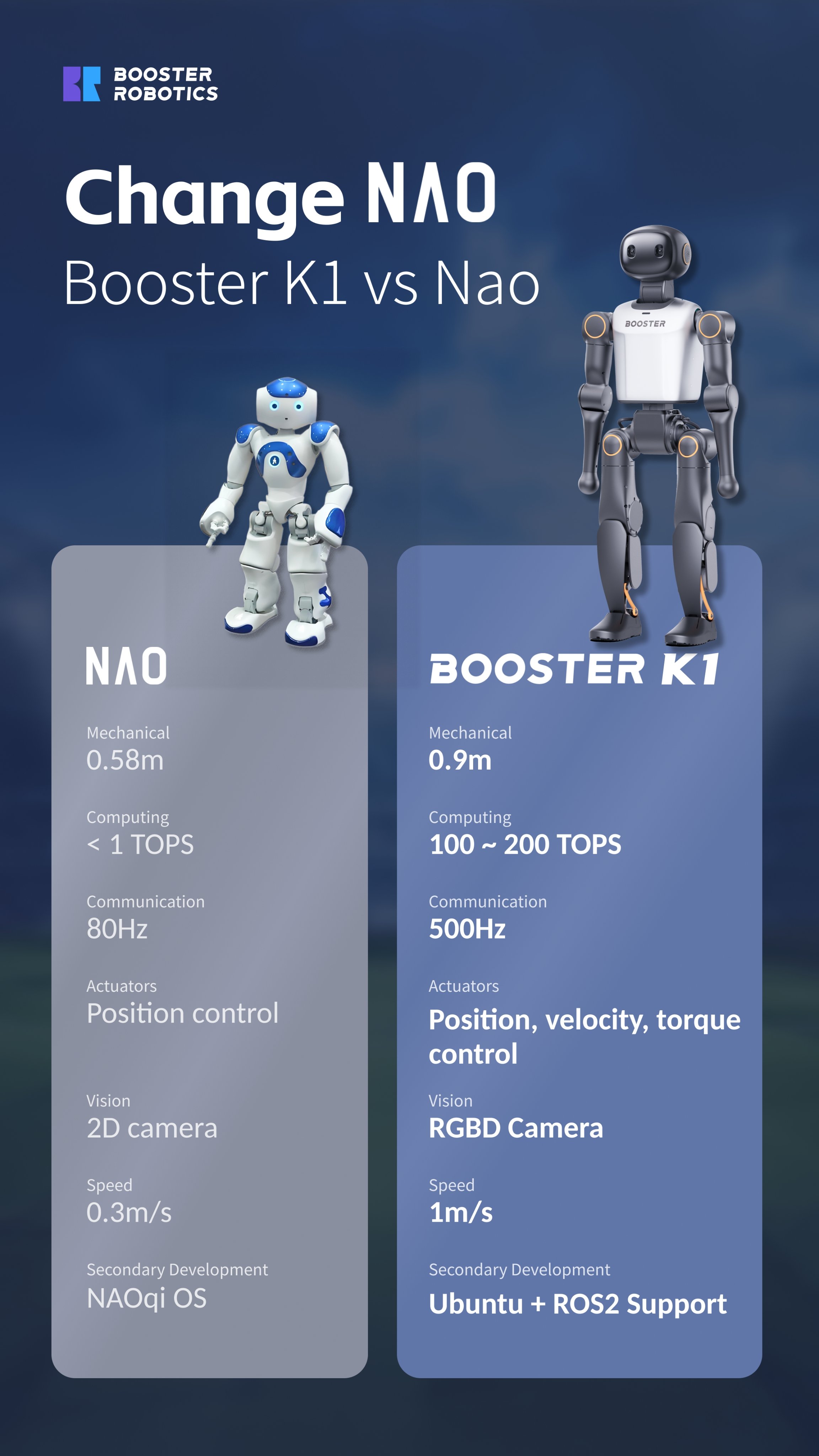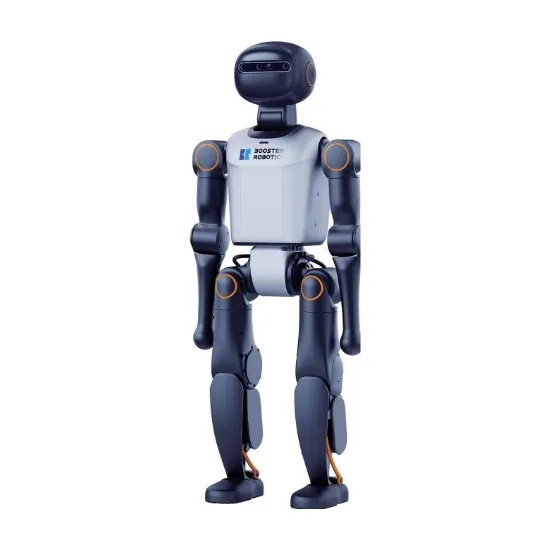-
 Visit our shop
Visit our shop
-
English

Well-established models such as Nao and Unitree are being challenged by a new player making its mark in small humanoid robotics: Booster Robotics. With the K1 and T1, humanoids designed for research, education and competition (Robocup), the young brand is proving that it can hold its own among the big boys. More affordable than its big brother the T1, find out how the K1 is establishing itself as the platform of choice for your projects.
Booster Robotics, founded in 2023 by engineers from Tsinghua, has over 20 years’ experience in humanoid robotics. Having already made a name for itself at the Robocup and WRC2024 thanks to the performance of the Booster T1, it has established itself as a reliable player in the sector. Backed by major investors, it builds robust, open-source robots.
While models such as Nao (Aldebaran) have long been the benchmark for small humanoid robotics, the technological landscape is changing rapidly. New platforms are emerging, designed to meet the specific needs of research, education and robotics competitions.
This is exactly how the Booster K1 came about. Developed by Booster Robotics, it features an open architecture that is simple to implement and accessible to a wide audience.

The Booster K1 incorporates a graphics processor capable of delivering 100 to 200 TOPS, ideal for executing complex artificial intelligence tasks. Whether it’s 3D visual recognition using the depth camera, interpreting voice commands using the microphone array or reinforcement learning to refine adaptive tasks, the K1’s architecture is designed for research and education.
Compatible with Python, C++ and ROS (Robot Operating System), the Booster K1 is an entirely open platform for customisation, experimentation and the prototyping of new ideas in humanoid robotics.
To guarantee precise, safe and natural interactions, the Booster K1 is equipped with a depth camera for 3D perception and precise navigation, a 9-axis IMU for tracking balance and complex movements, an array microphone for voice recognition and sound localisation, a loudspeaker for audio interactions, and tactile sensors for safe interactions with the user.
Its full connectivity(WiFi 6, Bluetooth 5.2, Gigabit Ethernet (RJ45)) and open API/SDK make it an extremely flexible platform, adaptable to all your humanoid robotics projects.
The K1 is based on the same design philosophy as the T1, by providing a response to the needs of researchers, teachers and RoboCup teams looking for an affordable, robust and high-performance solution.
Although designed using the T1 platform, the K1 is only half as powerful in terms of articulations and has more limited autonomy time, but is extremely responsive, precise and perfectly suited to intensive use in the laboratory and in competition.
This technical choice makes it possible to offer a lighter, more affordable robot, while retaining the stability, reliability and scalability that are the hallmarks of Booster Robotics.


Marine Senecat
Content Manager at Génération Robots
